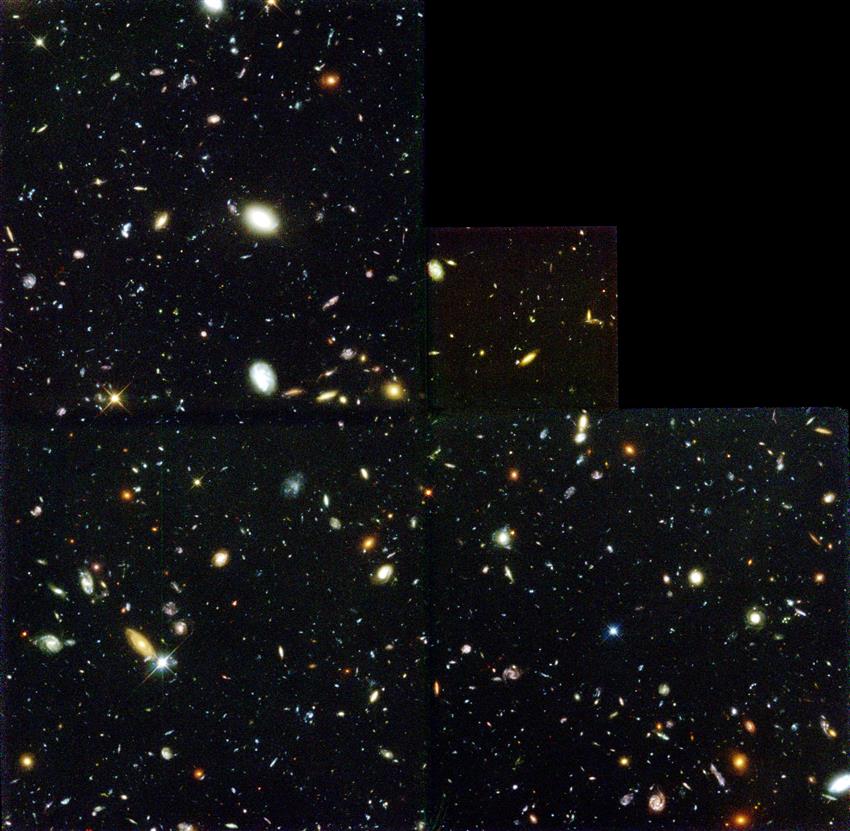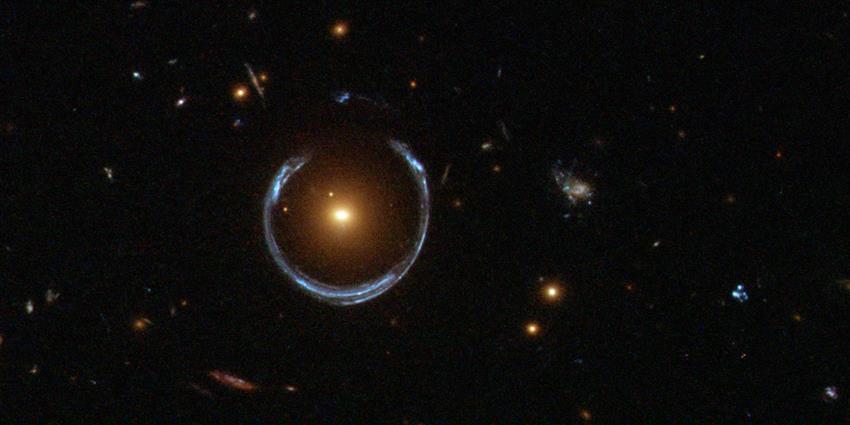Studying the first galaxies
For 10 days in , the Hubble Space Telescope observed a tiny patch of seemingly empty sky near the Big Dipper. The image it captured – known as the Hubble Deep Field – revolutionized the way astronomers and all of humanity perceived our universe. This image revealed a total of about 3000 celestial objects, most of which are galaxies of all shapes, sizes, and colours, each at a different stage of their evolution. And from the most distant among them, the light that had reached Hubble was an astounding 10 billion years old.
Since then, many newer versions of the Hubble Deep Field image have been taken, and astronomers now estimate that there are over 1 trillion galaxies in the observable universe. Hubble was able to observe galaxies as they appeared 500 million years after the Big Bang. The James Webb Space Telescope, often referred to as Hubble's successor, promises to push the limits of astronomy even more and study some of the very first galaxies ever created, only 200 million years after the event that began the entire universe.
Telescopic time machine
A unique feature of astronomy is that looking at objects farther away in space also means looking further back in time. Astronomers can usually only study celestial objects by observing the light they emit. Since all light travels at a fixed, constant speed — about 1 billion km/h — observations do not reveal these very faraway objects as they are now, but rather how they were when the light was first emitted, hundreds, millions, or even billions of years ago. When astronomers observe a galaxy at a distance of 10 billion light-years, they are observing it as it appeared 10 billion years ago!
What's more, light gathered from these distant objects changes as it travels vast distances. Light can be thought of as a wave. Blue light is more energetic and is made up of more tightly packed waves with a shorter wavelength. Red light is less energetic and has a longer wavelength. As light travels through space, it is affected by the fact that our universe is expanding. As the universe stretches out, the light waves it contains are stretched out too. This phenomenon called redshift means that a distant blue object will appear redder when astronomers observe it.
The very first galaxies shone brightly in ultraviolet and blue light, but since they are so distant from us, their light is redshifted when astronomers observe them. This ancient light appears as red and infrared light, making Webb, a powerful infrared telescope, the perfect tool to study these early galaxies.
Canadian astronomers at work: The CANUCS program
Through its participation in the international James Webb Space Telescope project, Canada has secured guaranteed access to 450 hours of telescope time during the first few years of the mission through the Guaranteed Time Observations (GTO) program.
Almost 200 of these hours will be dedicated to the CAnadian NIRISS Unbiased Cluster Survey (CANUCS) program led by Dr. Chris Willott of National Research Council Canada's Herzberg Astronomy and Astrophysics Research Centre. Dr. Willott and his team will use several of Webb's instruments, including the Canadian-made NIRISS instrument, to study how galaxies found in groups (containing less than a hundred) and clusters (counting many hundreds, even thousands) have evolved over the history of the universe.

Dr. Chris Willott is the Principal Investigator of CANUCS, a Webb observations program that will study some of the first galaxies ever formed and galaxies found in groups called clusters. (Credit: Chris Willott)
To better observe the most distant and faintest galaxies, the CANUCS team will take advantage of an optical effect called gravitational lensing. The mass and gravity of some celestial objects distort the very fabric of space. Light will also bend around distortions caused by objects called gravitational lenses.
The CANUCS program plans to observe very distant galaxies whose light is not only bent by the gravity of objects that lie between them and the Webb telescope, but whose light is also magnified. This will allow the team of astronomers to study very faint galaxies that appear brighter thanks to gravitational lensing. Without this phenomenon – and Webb's powerful mirror and instruments – it would be much harder to study these galaxies born only a few hundred million years after the Big Bang.
An international collaboration between NASA, the European Space Agency and the Canadian Space Agency, the James Webb Space Telescope is the most complex and powerful space telescope ever built. Canada contributed two key elements to Webb: the Fine Guidance Sensor (FGS) and the Near-Infrared Imager and Slitless Spectrograph (NIRISS). In exchange for that contribution, Canadian researchers will have access to 5% of the observing time available to the international community.
Explore further
- Date modified:


